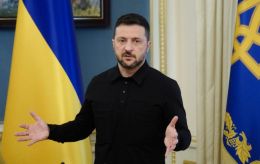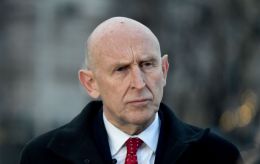EU drafts plan to redirect €200 billion of Russia’s assets to Ukraine — Politico
 Photo: The European Commission is preparing a plan to transfer €200 billion in Russian assets to Ukraine (Getty Images)
Photo: The European Commission is preparing a plan to transfer €200 billion in Russian assets to Ukraine (Getty Images)
The European Commission is developing a mechanism that will enable nearly €200 billion in frozen Russian assets to be transferred to Ukraine for post-war reconstruction, according to Politico.
According to the agency, Brussels is checking the readiness of national governments to transfer these funds into riskier investments that could bring Ukraine additional profits and increase pressure on Russia, which refuses to stop the fighting.
As Politico notes, supporters of this approach see it as a step towards the possible seizure of assets and their transfer to Ukraine as punishment for Moscow's refusal to pay compensation after the end of the war.
European Commission President Ursula von der Leyen stressed that work on the use of frozen Russian assets is ongoing and that these resources should contribute to the defense and reconstruction of Ukraine.
At the same time, the scheme does not provide for the immediate confiscation of assets, which most EU countries oppose due to legal and financial risks.
The discussion will culminate in a meeting of 27 EU foreign ministers in Copenhagen on Saturday, where this proposal will be discussed for the first time.
In a preparatory note seen by Politico, ministers are to consider further options for using the proceeds from immobilized Russian sovereign assets.
In the European Commission, this idea is being promoted by Economy Commissioner Valdis Dombrovskis and Foreign Policy Chief Kaja Kallas.
The agency notes that in 2026, Ukraine will face a budget deficit of around €8 billion.
Against the backdrop of limited resources within the EU and the lack of opportunities to issue pan-European debt instruments, Brussels is forced to look for new ways to support Kyiv.
Some countries, particularly the Baltic states, are in favor of complete confiscation of assets, but this option is being blocked by a number of Western European governments.
As a compromise, in 2024, the G7 countries agreed to send Ukraine €45 billion in profits from frozen assets, leaving the assets themselves untouched.
The European Commission is also considering the creation of a special trust fund modeled on the European Stability Mechanism.
Such a structure would avoid vetoes by individual countries, particularly Hungary, which could block the extension of sanctions against Russia.
According to the agency, transferring assets to the new fund would open the way for them to be invested in riskier instruments that could generate greater returns for Ukraine.
Meanwhile, skeptics, including Euroclear CEO Valérie Urbain, fear that EU taxpayers will have to cover the losses if riskier transactions prove unsuccessful.
"The Belgian government has recently warmed to the Commission’s plan, said an EU official and a senior non-Belgian diplomat, while countries farther away from Russia, such as Spain, are also backing the idea," the agency writes.
Russia's frozen assets
After Russia's full-scale invasion of Ukraine in 2022, the West blocked about $300 billion of the Russian Central Bank's reserves.
Most of the funds are held in Europe, particularly at the Belgian center Euroclear, with the rest scattered between the US, Japan, and other G7 countries.
As French President Emmanuel Macron previously stated, the European Union cannot confiscate the Russian frozen assets due to the lack of a legal basis.
However, yesterday it became known that the EU is preparing a 19th package of sanctions and new measures regarding frozen Russian assets. These steps are designed to intensify pressure on the Kremlin and support Ukraine.

